The intriguing customs, unique adventures and heart-stopping beauty of Japan set the stage for an extraordinary holiday. There are countless lists of must-do attractions on offer, but it can be hard to choose from a bunch of meaningless names. Here we have broken down just a handful of the incredible experiences that your journey through Japan can offer.
Miyajima.jpg
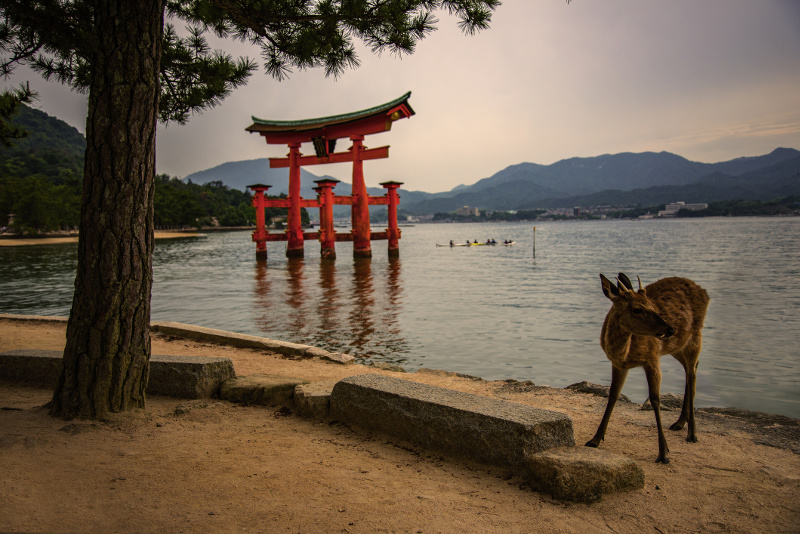
Miyajima Island
What: An incredibly picturesque island just a short boat ride from Hiroshima.
Why you’ll love it: Fearless deer will greet you as you walk down the traditional paths towards a view of the giant torii gate, an alleged boundary between the spirit and human worlds. At high tide, the torii seems to float on the ocean, and at low tide you can walk out to the base of the 17-metre gate.
Fun fact: Miyajima is the birthplace of Japan’s quintessential rice scoop, or shakushi, and the world’s largest wooden scoop resides on the island in Omotesando shopping street.
Kinkaku-ji - The Golden Pavilion
What: Translated as ‘the golden pavilion’, Kinkaku-ji’s top two storeys are covered in delicate gold leaf.
Why you’ll love it: Set amongst a stunning sculptured garden, this northern Kyoto landmark will wow you with its sumptuous beauty. No matter how many photos you’ve seen, you won’t be able to stop yourself from taking a hundred of your own.
Fun fact: Approximately 48 kilograms of gold adorn the temple, and the interior of each level reflects a different style of Japanese architecture.
Okonomiyaki.jpg
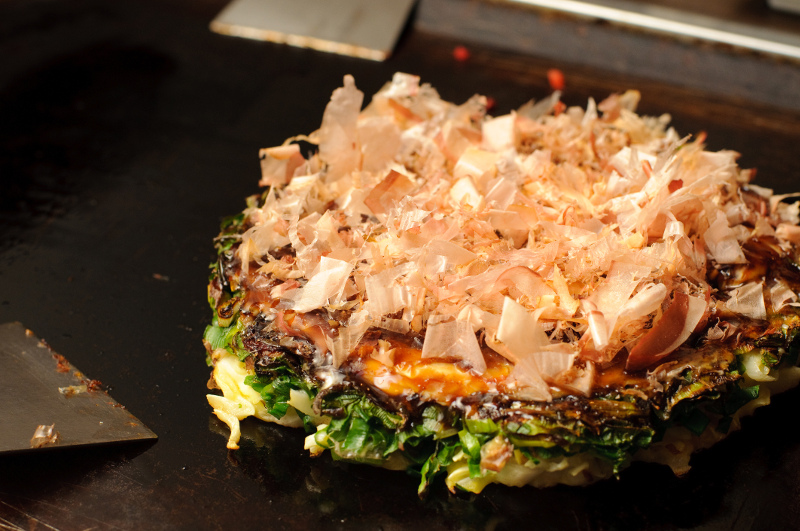
Hiroshima-style Okonomiyaki
What: A savoury pancake/ omlette layered with cabbage, noodles, pork and shrimp, topped off with a variety of mouthwatering condiments.
Why you’ll love it: Dedicated okonomiyaki restaurants offer tables with a hot griddle in the centre. The experience of cooking your own meal is guaranteed to enhance the highly delicious and satisfying flavours of your pizza pancake.
Fun fact: Okonomi means ‘how you like’ and yaki is translated as ‘fry’, or ‘grill’. This dish was originally a leftover go-to when rice supplies were short.
Maiko Tea Ceremony
What: A traditional Japanese tea ceremony hosted by a maiko, or apprentice geisha
Why you’ll love it: Every movement is rich with meaning and symbolism in this revered tradition, which is beautiful in a uniquely solemn manner. Encountering a maiko or geisha in real life is overwhelming – from her graceful bearing to her exquisite kimono, every aspect of your hostess has been perfected through centuries of grooming and training.
Fun fact: Tea ceremonies were traditionally hosted by men and considered a measure of status amongst the warrior classes
Gion Geisha.jpg
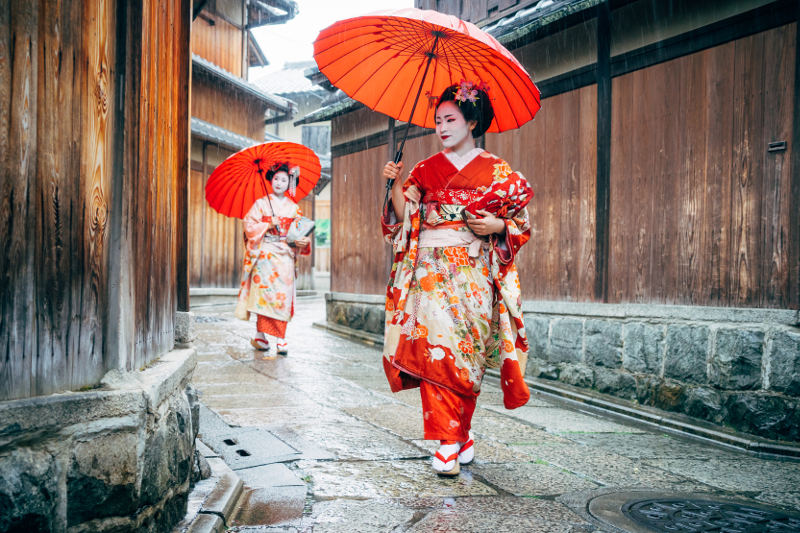
The cobbled streets of Gion, Kyoto
What: Gion is a district of Kyoto that boasts one of the most famous and exclusive geisha regions in Japan.
Why you’ll love it: Gion’s cobblestone streets and historic machiya (teahouses) are the ideal backdrop for geisha sightings. Stroll through the neighbourhood at dusk and you might be lucky enough to glimpse one of the striking maiko or geisha hurrying to their evening engagements.
Fun fact: Maiko are generally not permitted to own or use a mobile phone.
Ways to end your trip on a high-class note: Luxury Experiences in Tokyo
More from authentic Japan: The Last Outpost for Japan's Pearl Divers
Kiyamizu-dera - The Temple of Clear Water
What: Nestled half way up Otawa Mountain lays Kiyamizu-dera, a Buddhist temple with history dating back to 778. Drink the fresh, sweet water from Otawa Waterfall to promote longevity, academic success and luck in love.
Why you’ll love it: The temple’s verandah juts out over a luscious forest of maple and cherry trees, which frame a stunning view of the city of Kyoto.
Fun fact: The waters of the Otawa Waterfall are divided into three separate streams, each promoting a different benefit; however, it is considered greedy to drink from all three.
Clear Water temple.jpg
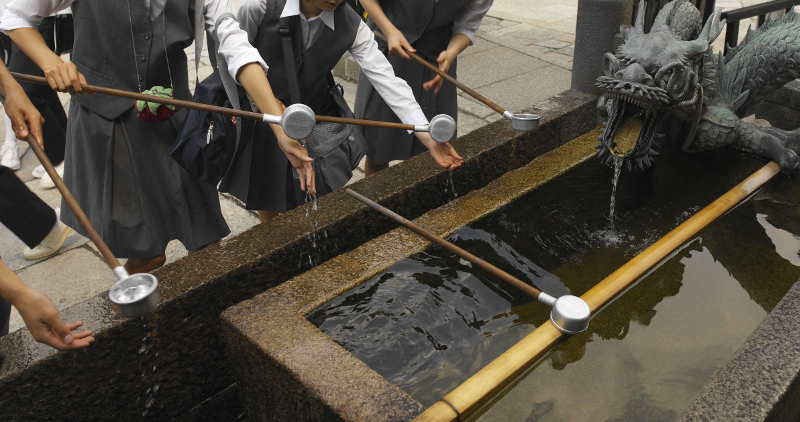
Sagano Bamboo Forest, Arashiyama
What: An otherworldly grove of stately bamboo trees, located about half an hour’s journey from central Kyoto.
Why you’ll love it: Sounds are muted, breezes sway the whole world, and sunshine is transformed into a green glow as you pass through the embrace of the Sagano Bamboo Forest.
Fun fact: The magical sound of the wind blowing through this bamboo forest has been included in a list of ‘100 sounds we must preserve’, compiled by the Japanese government.
Sanjusangen-do - home of the Thousand Armed Kannon
What: A temple that houses 1000 life-sized representations of the Thousand Armed Kannon, the Bhuddist Goddess of Mercy.
Why you’ll love it: Seeing the endless rows of this gleaming deity is a spine-tingling glimpse into the depths of ancient beliefs. The majestic statues are spread out along a 120-metre hall, the longest wooden building in Japan.
Fun fact: The Kannon has 11 heads to better see the suffering of mankind and 11 arms to help fight it off.
Inari shrine.jpg
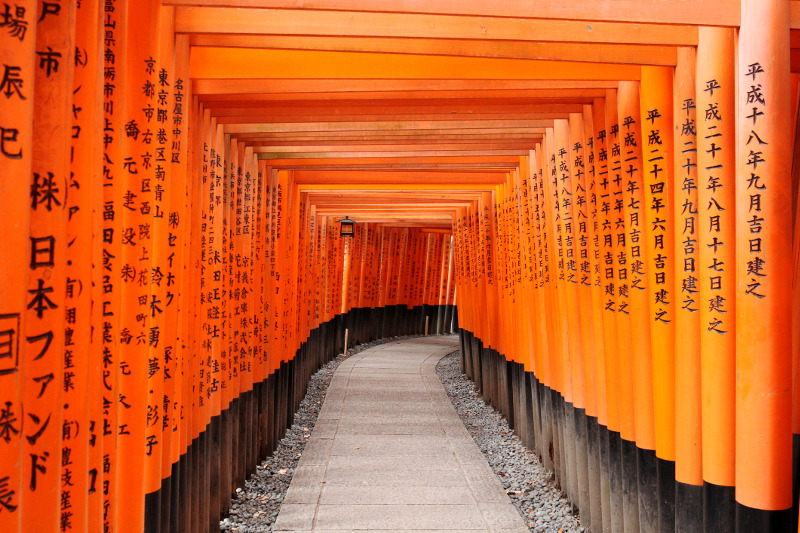
Fushimi Inari
What: A gorgeous Shinto shrine in southern Kyoto, famous for its vivid red torii gates, built in honour of the god of rice.
Why you’ll love it: Thousands of brilliant red gates arch over walkways that trail through the forests of Mount Inari. A walk through these red halls is a true experience in foreign beauty - a stroll through a landscape rich with unexpected shrines and endless photo opportunities.
Fun fact: Each gate has been donated by a company or organisation as a symbol of gratitude for their prosperity and in the hopes of future good fortune.
Hiroshima Peace Memorial Park and Museum
What: A beautifully designed park and museum dedicated to the memory of those who lost their lives in the Hiroshima bombings of World War II, with a focus on ensuring peace for future generations.
Why you’ll love it: It’s hard to envisage any kind of terror in the breezy, bonny city of Hiroshima. Both the park and the museum do a wonderful job of honouring the story of the city’s decimation in a way that encourages peace.
Fun fact: The A-Bomb Dome was the only building to partially survive the detonation of the bomb at ground zero - it was located just 160 metres from the hypocentre.
Hiroshima.jpg
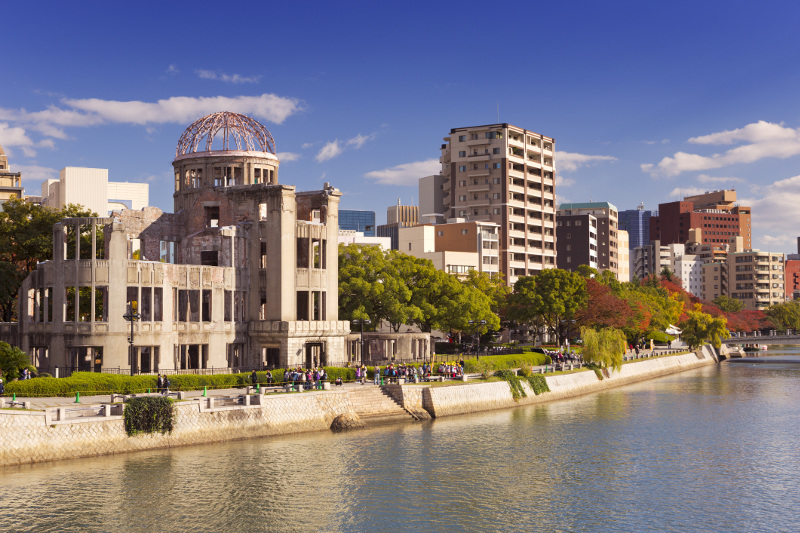
Onsen
What: Onsen is the word for bathing springs heated by Japan’s prolific volcanic activity. Men and women bathe separately, and must be completely naked when entering the baths.
Why you’ll love it: The dress-code can be confronting, but onsen is a time-honoured tradition that is still a cherished part of modern life in Japan. Slipping into the piping hot water is a delicious feeling that is further enhanced by the nutritious benefits of the mineral-rich water.
Fun fact: There are nine kinds of onsen water, each beneficial in its own way.
All these experiences are yours for the taking on Peregrine's 12-day Explore Japan itinerary. The expert team at Peregrine are devoted to bringing you in-depth local experiences and authentic moments that will endure in your memories. Get in touch with your local Travel Associates to book your adventure!












